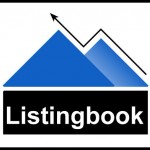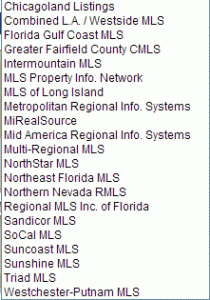You’ve got one, don’t you? You know: an elevator speech!
It’s the 60 second or less description of who you are and what you do that you will use over and over again, just about every day in your career. The elevator speech should differentiate you from your competitors, make you stand out and above all, distinguish you as an alternative to the status quo. This is the biggest reason your more traditional competitors don’t have elevator speeches: they are all pretty much alike, with little to distinguish one company from another beyond the logo and the colors.
Here’s an elevator speech from a traditional real estate practitioner:
‘Um, well . . . we’re a full service firm and um . . . we list and sell real estate, and . . . we’ve got a great sign and of course there’s the MLS and you’ve seen our ads in the paper, right?’ . . . and so on.
It is essential that Help-U-Sell people have an elevator speech because you are different. Consumers sense this from the name or from what their neighbor said, but they’re usually not sure how you are different. The elevator speech, rehearsed and internalized until it becomes automatic, powerfully establishes you in the consumer’s mind with a distinct identity — one that is very attractive!
Here are the points your elevator speech should make:
- You are a REALTOR
- You do everything the others guys do and more
- You charge a set fee instead of a commission
- You save consumers a lot of money over what they’d spend on a traditional commission arrangement
Here’s an example of a typical Help-U-Sell elevator speech:
(You get on a fairly full elevator on the first floor and punch the button for ’17’. You notice one of the other passengers staring at your name badge. ‘Help-U-Sell, huh?’ she says, ‘What do you guys do?’)
‘We’re full service REALTORS. We do everything all of the other REALTORS do — and more — but instead of a sales commission, we charge a low set fee, which can save you thousands of dollars. For example, the median price single family home here in Springfield is about $220,000. A typical 6% real estate commission on that would be $13,200. We’d sell the same property for a low set fee of $4,950, a savings of almost $8,000.’
Notice that the speech is customized to the local market at the end, an important element in bringing the power of your program home. If you happen to be in a situation where you have a little more time — say 10 seconds more — you might even personalize the speech for the person with whom you are speaking:
‘We’re full service REALTORS. We do everything all of the other REALTORS do — and more — but instead of a sales commission, we charge a low set fee, which can save you thousands of dollars. For example, may I ask the approximate value of your home?’
‘Well . . . about $250,000 I guess.’
‘A typical 6% sales commission on that would be $15,000. We’d get the same result and only charge $4,950. That’s about $10,000 in savings!’
The point of an elevator speech is not just to quickly an succinctly distinguish yourself from other real estate companies. It’s also to leave the other person hungry for more information. Typical responses to good elevator speeches are: ‘Really?’ ‘ How are you able to do that?’ and ‘Tell me more!’ All are an invitation to elaborate.
You’ll use your elevator speech when you are face to face with a consumer (and you want to always wear your name badge to encourage the question), but you’ll also use it when the telephone rings in your office. Seller inquiries often begin with the question, ‘What do you do?’ Any time you hear it — or anything similar — it’s time to trot out the elevator speech. I’d suggest you always personalize the speech when you get this kind of inquiry because it helps start the process of getting information from the caller that will continue as the call progresses. Here’s an example:
‘Help-U-Sell Acme, may I help you?’
‘Yeah, um . . I saw one of your ads and I was wondering, what exactly do you guys do?’
‘We are a full service real estate firm. We do everything all the other REALTORS do, and more, except that instead of a percentage based sales commission, we charge a low set fee — which can save you lots of money at closing. For example, may I ask the approximate value of your home?’
‘Oh, I dunno . . ’bout $300,000′
‘Well, a traditional broker with a 6% commission would charge $18,000 to sell your home. We’d do the same thing for $5,950 — which would save you about $12,000.’
‘You’re kidding! How are you able to do that?’ . . . and so on.
Notice that each of these example speeches end the same way: with the savings a seller might achieve by working with you. That is the most powerful story you have to tell and it is important that your elevator speech leads up to it.
You may be wondering how you might use the elevator speech with a prospective buyer. First, let’s distinguish between the casual, curious question and the serious inquiry. The casual question is the one you got in the elevator. A curious person saw your badge and asked for information. Chances are they don’t have an immediate need to buy or sell. It’s an opportunity to educate everyone within earshot about your program and it may end with one or more requests for your business card. In these situations it’s best to simply use the standard seller version as illustrated above.
A phone call into your office, an inquiry, is different. You can be reasonably sure that the person on the other end of the line has a legitimate need to buy or sell real estate in the near future: why else would they have called? Sellers will usually begin the call by asking what you do. Buyers will usually begin by asking about a property. It’s the sign, the ad or the flyer that motivates a buyer to make the call, not curiosity about how we’re different. You must use the opportunity of the buyer inquiry to distinguish yourself as being different (better) than anyone else, to communicate the value you can bring to the buying process, and oh, by the way: answer the buyer’s questions!
Notice that with the seller inquiry, we lead with the elevator speech because it opens the caller to wanting more information about us and a willingness to share information about their situation. It’s almost the opposite with buyer inquiries. We must begin by answering their questions about the property in such a way that they perceive the value we bring. That’s what opens them to learning how we’re different and better (the elevator speech). . . and it’s also a topic big enough for a post of its own!


 You know, we’re bombarded with stats about how many home buyers use the Internet in their search. The general consensus is that the figure is about 85%. Of course, that’s why we all need to be shifting as much of our marketing as possible to the Internet: that’s where the buyers are. But the other side of that coin is that the Internet buyer tends to spend much more time looking before they’re ready to buy, some estimate five or six months or even more.
You know, we’re bombarded with stats about how many home buyers use the Internet in their search. The general consensus is that the figure is about 85%. Of course, that’s why we all need to be shifting as much of our marketing as possible to the Internet: that’s where the buyers are. But the other side of that coin is that the Internet buyer tends to spend much more time looking before they’re ready to buy, some estimate five or six months or even more. 